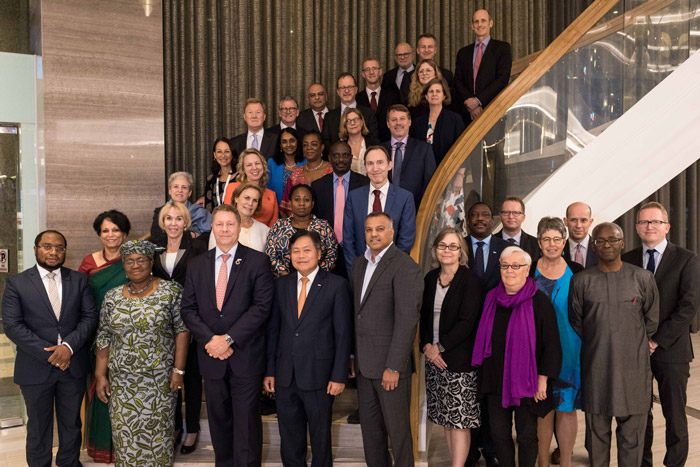15a Successfully transitioning Nigeria from Gavi support pdf
1
Board -2017 -Mtg -3-Doc 15a
Section A: Introduction
? At its Retreat in April 2017, the Board discussed the significant risks to
Nigeria?s upcoming transition and asked the Secretariat to consider if a
tailore d strategy was required. Nigeria is in a particularly fragile situation,
with poor health outcomes and very low coverage rates (2016 coverage with
three doses of pentavalent vaccine (penta3) of 33% based on the latest
coverage survey ), a constrained macroeconomic environment , multiple
outbreaks ( Measles, Yellow Fever, Meningitis, Cholera, Monkeypox, Lassa
Fever ), one of the 3 remaining polio endemic countries, persisting vaccine
hesitancy, and insecurity in large parts of the North . Substantial bilateral and
multilateral support has been provided to increase coverage but with little
tangible effect. As the Board has discussed, Nigeria may therefore not be
on track for successful transition, due at the end of 2021. Yet, recent political
shifts within the health sector, and the National Primary Health Care
Development Agency (NPHCDA) in particular, give cause for cautious
optimism and a renewed opportunity for greater engagement by Gavi. Such
an engagement must be underpinned by demonstrated political
commitment, including the resolution of outstanding audit issues.
? Having declared immunisation a national emer gency, Nigeria is now
working to finalise an ambitious plan aiming to strengthen its programme
and achieve national penta3 coverage of 80% by 2025 (with differentiated
targets for different states). If implemented well, this could significantly
increase co verage and sustainability over the next few years.
? Building on lessons learnt and the increased political commitment , the Gavi
Alliance is planning to work differently in Nigeria, at all levels. At the national
level we will increase the Alliance?s strateg ic and political engagement, seek
greater partner alignment and invest in strengthening the leadership,
management, supervision and coordination capabilities of the newly
established National Emergency Routine Immunisation Coordination
Centre (NERICC) . Giv en that health programmes are primarily managed at
State level, we would also plan to target a limited number of low performing
states with a focus on building local leadership and management capacities
and experimenting with and rapidly learning from inno vative approaches.
These would focus on areas such as use of data, demand -generation
approaches, vaccine management, and improving service delivery through
SUBJECT : SUCCESSFULLY TRANSITIONING NIGERIA FROM GAVI
SUPPORT
Agenda item: 15a
Category: For Decision
Report to the Board
29 -30 November 2017

